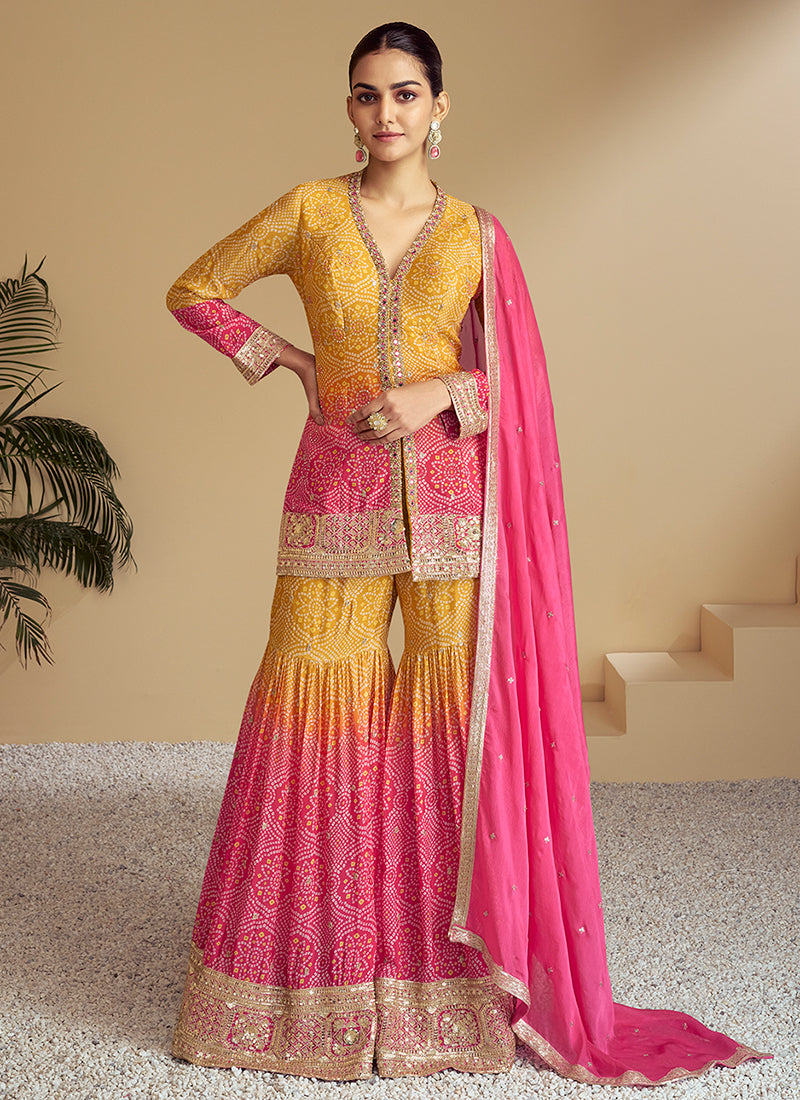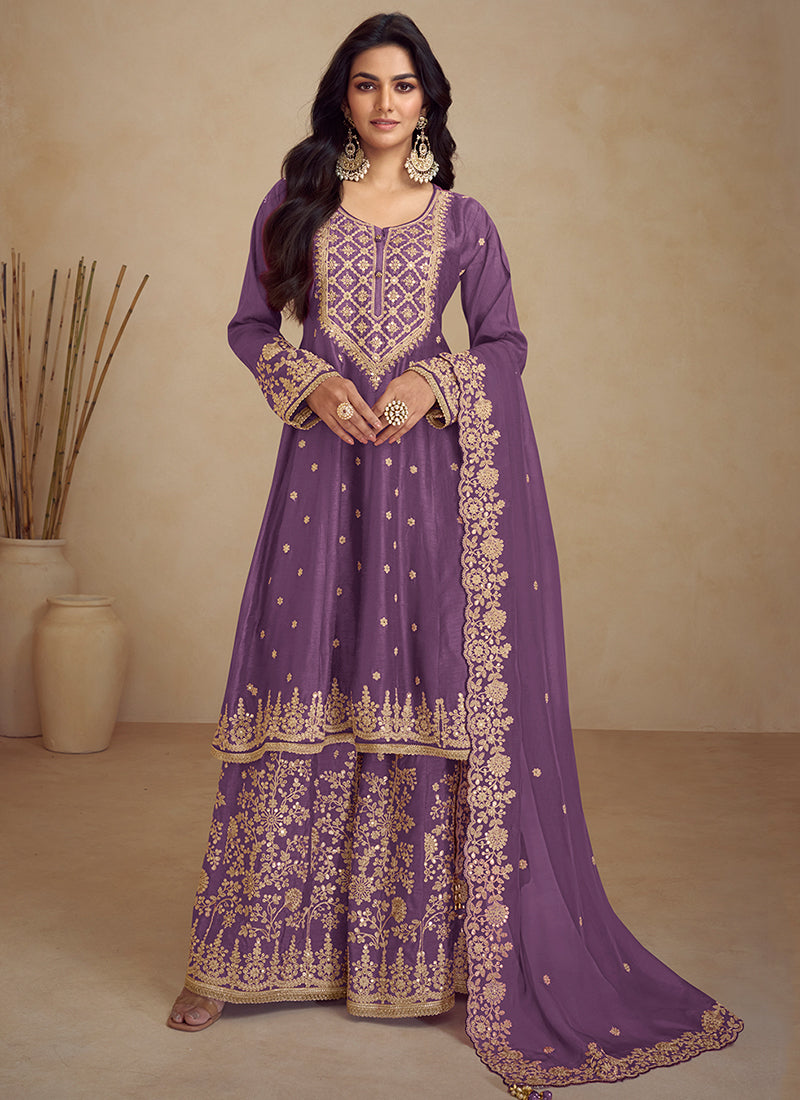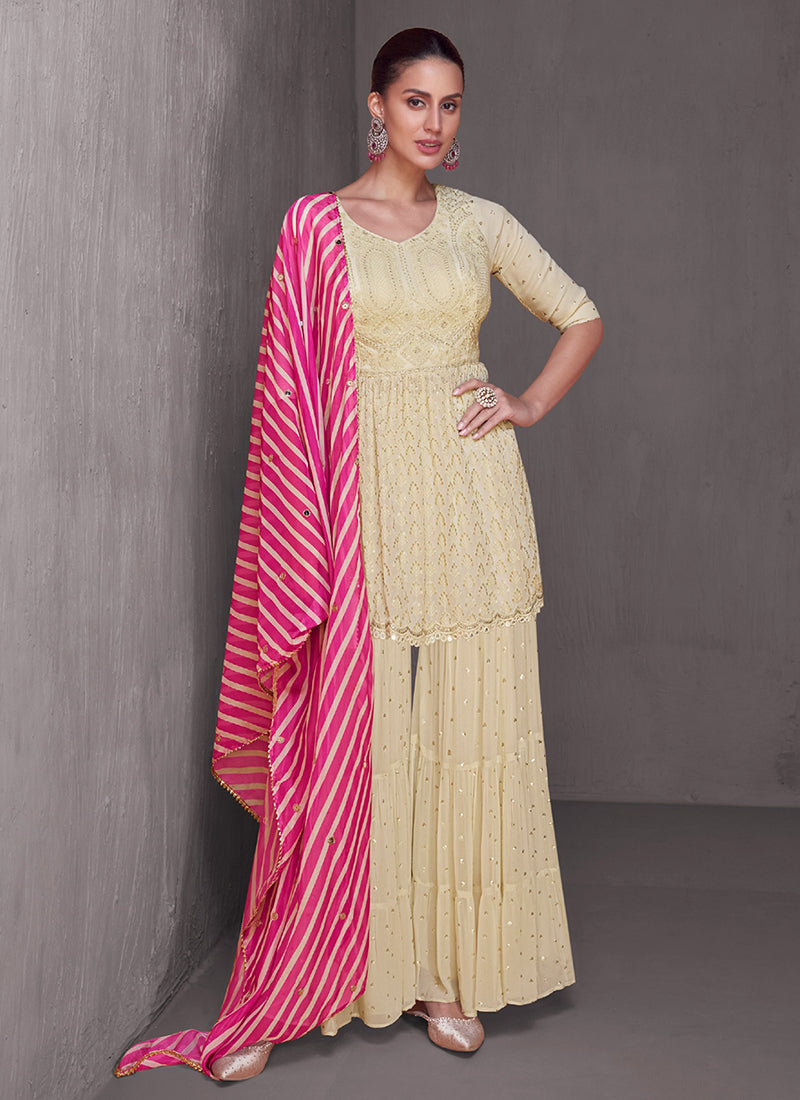Sharara suits have become a staple in Indian fashion, celebrated for their elegance, comfort, and versatility. With their rich heritage and modern adaptations, these outfits encapsulate the essence of traditional craftsmanship while embracing contemporary trends. Let’s delve into the history and evolution of sharara suits to understand their enduring appeal.
1. Historical Roots
The origins of the sharara can be traced back to the Mughal era in India, where they were worn by royalty and aristocrats. The word "sharara" itself is derived from the Persian language, meaning "to flow." This beautifully reflects the outfit's silhouette, characterized by wide-legged, flared pants that resemble a flowing skirt. Traditionally, shararas were made from luxurious fabrics like silk and adorned with intricate embroidery, making them suitable for grand occasions.
In the early days, shararas were often paired with short kurtas or embellished tops, creating a regal look that was favored by women of high status. This combination showcased the rich textiles and artistry of the time, with elaborate designs that symbolized wealth and sophistication.
2. Cultural Significance
Sharara suits hold significant cultural value in various regions of India, particularly in North India and among Muslim communities. They are often worn during weddings, festivals, and special celebrations, symbolizing joy and festivity. The outfit's unique design allows for ease of movement, making it an ideal choice for lively occasions where dancing and celebrations are part of the experience.
In the context of traditional attire, sharara suits also represent a fusion of cultures, blending Indian and Persian influences. This cross-cultural heritage adds depth to their appeal, making them a favorite among those who appreciate both tradition and modernity.
3. Evolution Over Time
As fashion trends evolved, so did the sharara suit. In the late 20th century, shararas made a comeback, driven by a renewed interest in traditional attire among younger generations. Designers began experimenting with cuts, fabrics, and styles, resulting in a plethora of contemporary variations.
Modern Interpretations
Today, sharara suits come in various styles, from heavily embellished versions for weddings to simpler designs for casual outings. They are often paired with long, flowing dupattas, creating a graceful silhouette. The use of lightweight fabrics like georgette and chiffon has made sharara suits more accessible and comfortable, catering to diverse tastes and occasions.
Color and Print Trends
While traditional shararas are often seen in rich, deep colors, modern variations embrace a wide palette, including pastels and vibrant hues. Floral prints, digital prints, and intricate embroideries have also become popular, allowing wearers to express their personal style while maintaining the outfit’s traditional roots.
4. Current Trends and Popularity
In recent years, sharara suits have gained immense popularity in the fashion industry, thanks to social media and celebrity endorsements. Influencers and fashion icons often sport shararas at events, showcasing their versatility and charm. This visibility has led to a surge in demand for sharara suits, with designers constantly innovating to create fresh designs that appeal to a younger audience.
Sustainable Fashion
With the rise of sustainable fashion, many designers are now focusing on eco-friendly fabrics and ethical production practices. This trend has encouraged the revival of traditional craftsmanship, as artisans are increasingly sought after to create authentic sharara suits that celebrate heritage while being mindful of the environment.
5. Styling Your Sharara Suit
Styling a sharara suit can be both fun and creative. Here are some tips to enhance your look:
- Choose the Right Top: Pair your sharara with a stylish kurta, crop top, or a long jacket to create a balanced silhouette.
- Accessorize Wisely: Opt for statement jewelry like jhumkas or choker necklaces to elevate your outfit. A matching dupatta can also add an extra touch of elegance.
- Footwear Matters: Traditional juttis or modern heels can complement your look, depending on the occasion.
-
Experiment with Colors: Don’t hesitate to mix and match colors and prints to create a unique ensemble that reflects your personality.

Conclusion
Sharara suits are more than just a fashion statement; they are a celebration of culture, history, and artistry. Their evolution from royal attire to contemporary fashion reflects the changing dynamics of style while honoring tradition. Whether for weddings, festivals, or casual outings, sharara suits remain a timeless choice that combines elegance with comfort, making them a beloved addition to any wardrobe. Embrace the beauty of sharara suits and let their rich legacy enhance your personal style!












